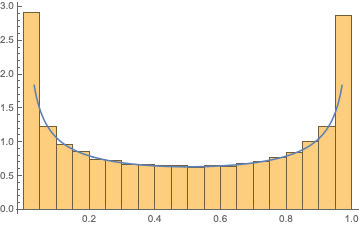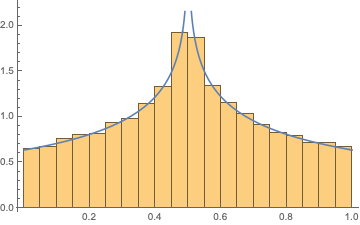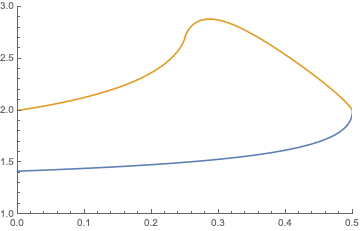Let $\sigma_1\geq\sigma_2\geq...\geq\sigma_n\geq0$ be any deterministic sequence of positive real numbers such that $\sum_{i=1}^n\sigma_i^2=1$. Let $$D=diag\{\sigma_1,...,\sigma_n\}\in\mathbb{R}^{n\times n}$$ be a diagonal matrix of size $n\times n$.
Let $U$ and $V$ be two independent random matrices uniformly distributed on the orthogonal group $O(n)$. Then we form a random matrix as follows: $$A=UDV^T$$ Therefore, $A$ is a random matrix with given singular values and the distribution is orthogonally invariant. Now we define a quantity that measures how far away is $A$ from a diagonal matrix: $$f_{\sigma}(A)=\sum_{1\leq i\neq j\leq n}A_{ij}^2=\sum_{1\leq i\neq j\leq n}\left(\sum_{k=1}^n\sigma_kU_{ik}V_{jk}\right)^2=1-\sum_{i=1}^n\left(\sum_{j=1}^n\sigma_jU_{ij}V_{ij}\right)^2$$ which is just the sum of squares of all off-diagonal elements of $A$, the smaller $f_{\sigma}(A)$ is, the "more diagonal" $A$ is. Note the dependency of $f$ on the given singular values $\sigma$.
I'm interested in the following quantity: $$g_{\sigma}(t)=\frac{\mathbb{P}\left(f_{\sigma}(A)\leq 2t\right)}{\mathbb{P}\left(f_{\sigma}(A)\leq t\right)}$$ where $0<t<1/2$.
I have the following 2 conjectures:
- For $n\geq 5$, for any $0<t<1/2$, $g_{\sigma}(t)$ is maximized when $\sigma_1=...=\sigma_n=1/\sqrt{n}$.
- There exists a constant $C>1$ independent of $t, \sigma$, such that $g_{\sigma}(t)\leq C^{n^2}$
I believe they should be correct but I have no clue of how to prove them. Any suggestions and discussions are appreciated. What kind of tools could possibly be useful?
I have a feeling that existing literature in random matrix mainly focus on going from the matrix to eigenvalues or singular values, ignoring the eigenvectors or singular vectors. I do not see results about going from given spectrum to the matrix.



